Positive Space in Interior Design — A Masterclass on What It Means and How to Use It Like a Pro to Create Better Interiors
If you understand the concept of positive space, you can ensure your interiors are well balanced and have the perfect ambiance
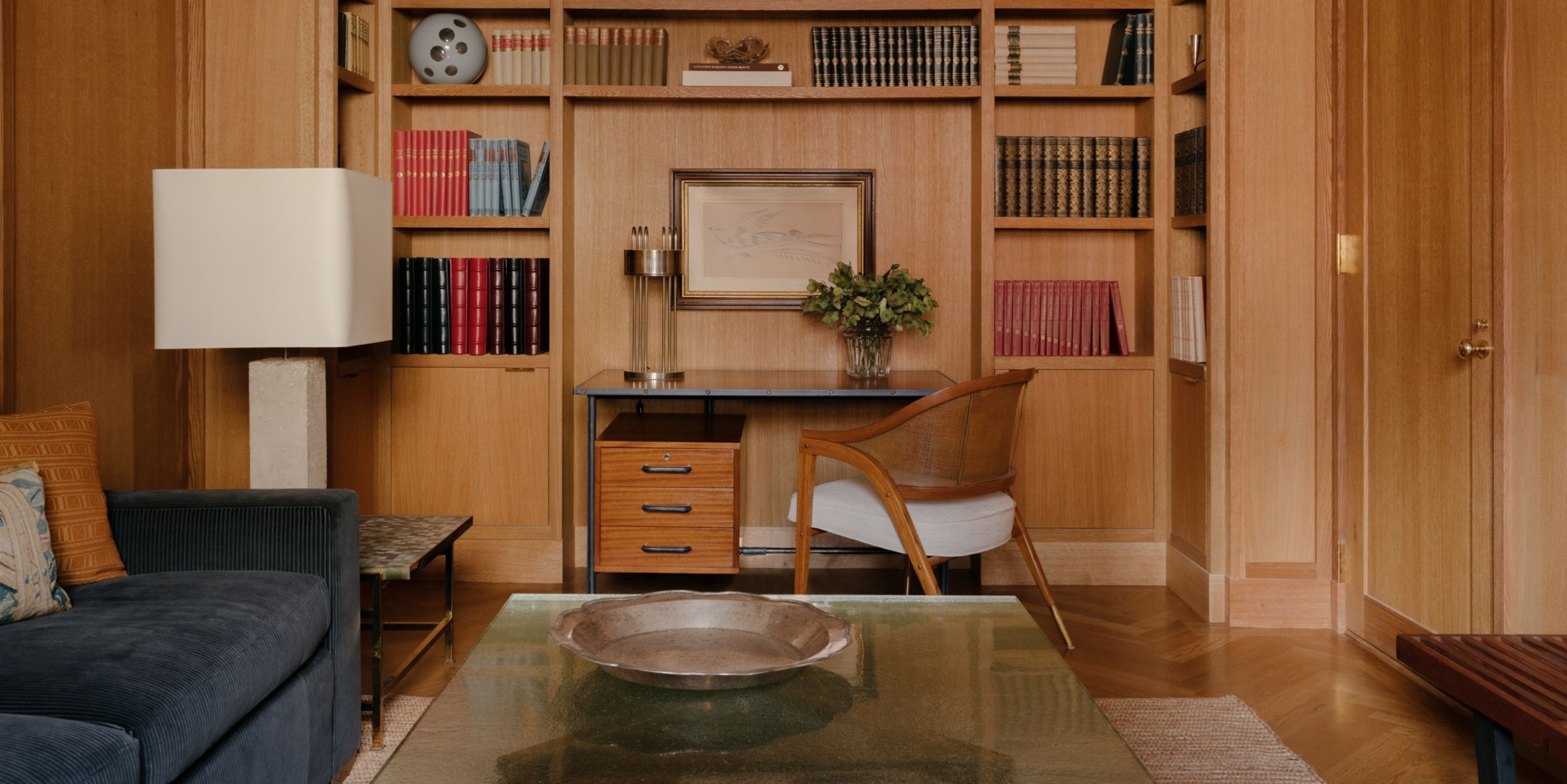

Picture a room that’s sparsely furnished and then one that’s crowded, and you’ll have an immediate idea of why positive space in interior design matters. Even when they’re imagined spaces, you can be sure that the usability, ambiance, and appearance of these rooms will be very different.
When it comes to the rules of interior design, positive space refers to the space that’s occupied — by furniture, but also by other elements of décor, such as lighting, artwork, and accessories. Its opposite is 'negative space', the areas around and between the furniture and other décor, and the way you balance the two largely determines what the room will feel like.
Neither the sparsely furnished room nor the crowded one are design ideals, but interior design experts do use the positive space in a room to create an ambiance that can be minimalist without being stark, maximalist without being overfilled, or anywhere in between and, below, they’ve shared their expertise on getting it right.
What is positive space in interior design?
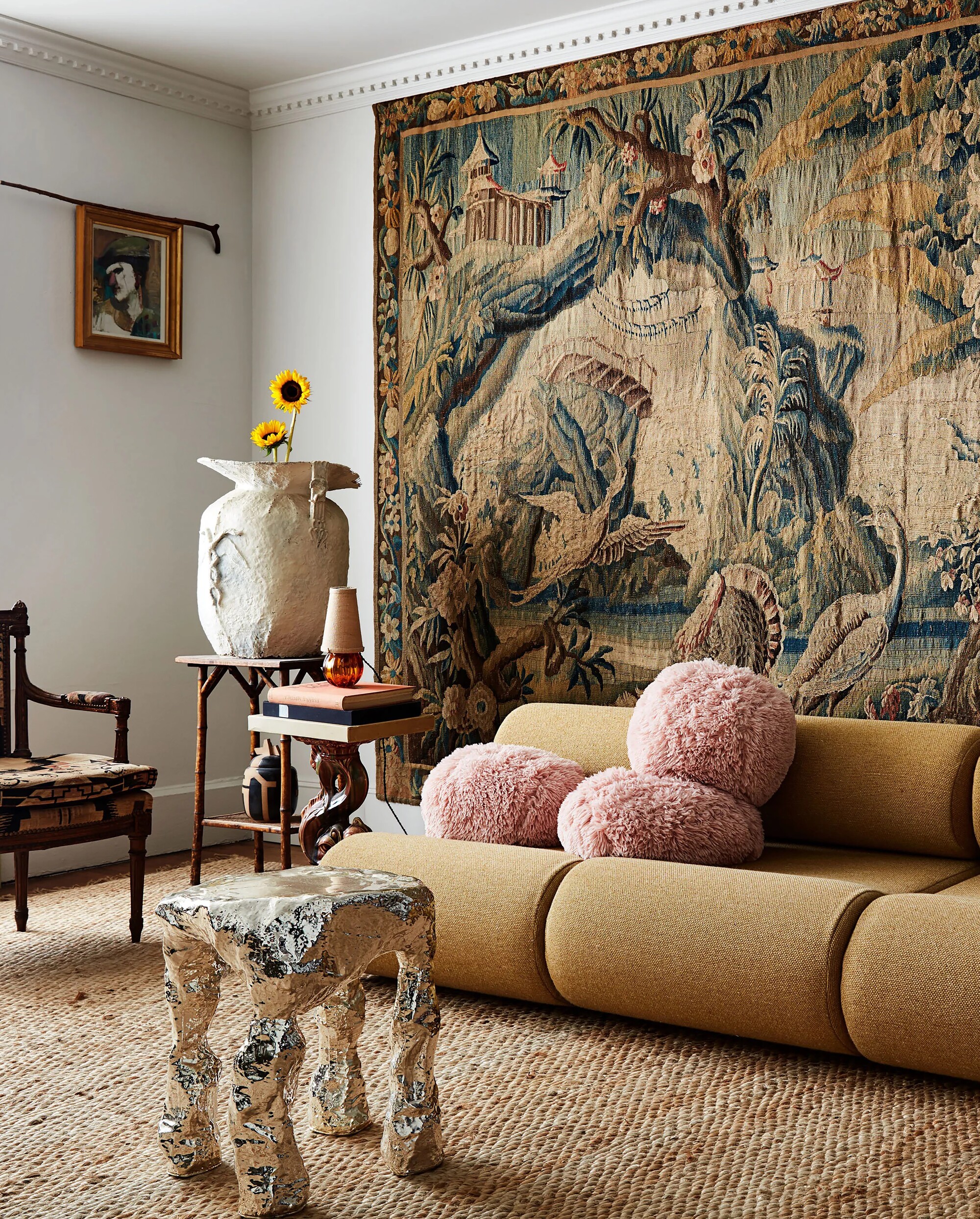
“Positive space — the area occupied by furniture, artwork, lighting, and décor — is the backbone of a well-balanced interior,” explains Erica McLain of McLain by Design Interiors.
It may seem obvious that these are part of an interior, but the concept of positive space is about so much more than the room’s contents. “Its importance lies in its ability to define function, create focal points, and convey the room’s personality,” says Erica. “Without thoughtful use of positive space in interior design, a room risks feeling sterile, disconnected, or devoid of soul. Positive space anchors a design, providing structure while expressing the lifestyle, purpose, and aesthetic narrative of the inhabitants.
“By treating positive space as a canvas for storytelling and well-being, you ensure your interiors not only look stunning but also feel purposeful and restorative,” she adds.
How do you make positive space in interior design feel deliberate?
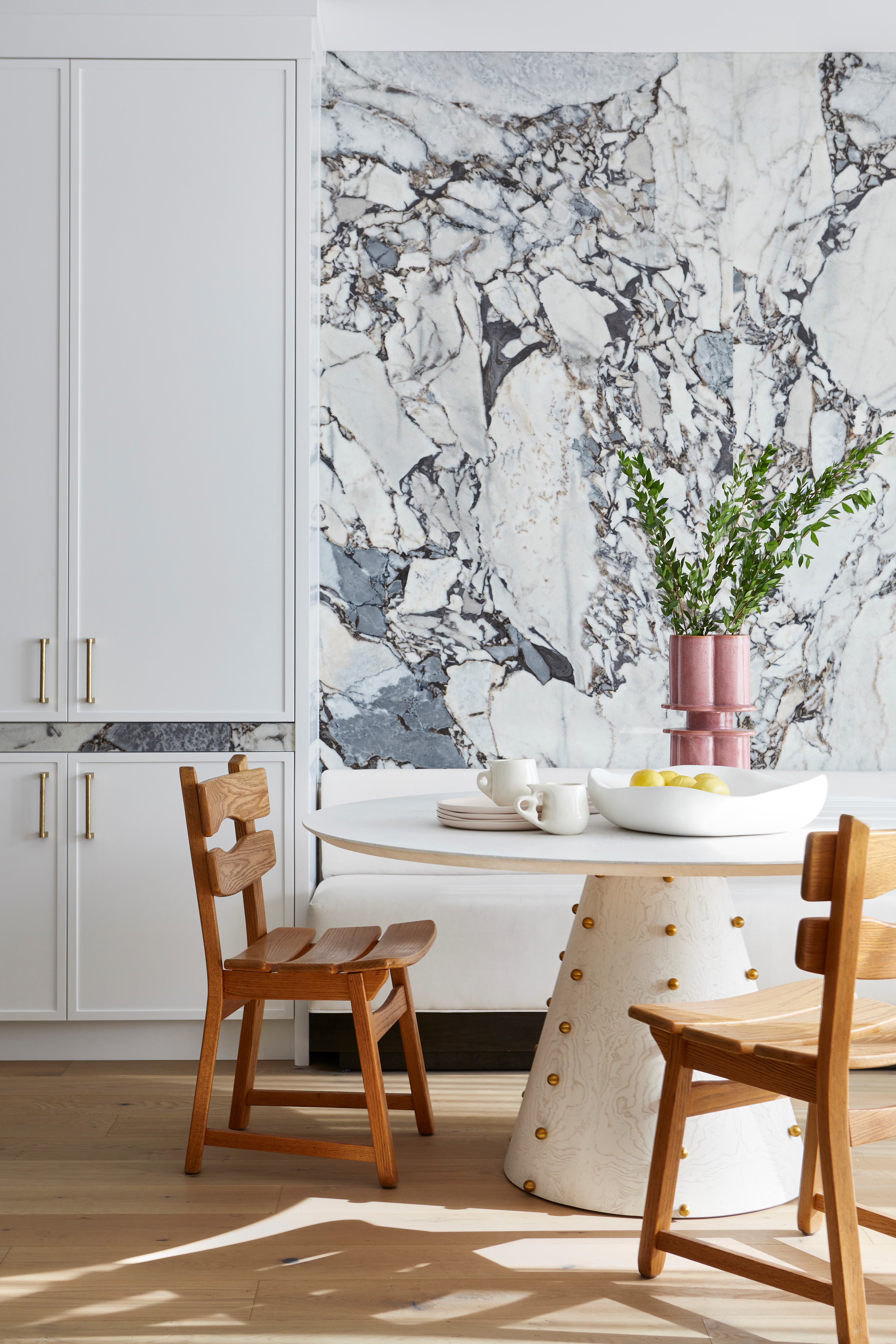
To make positive space in interior design feel deliberate it's important to keep in mind, once again, that it is not merely synonymous with the room’s furniture and décor. Instead, it is about what those pieces are doing in the design, and the atmosphere they create. “To make positive space intentional, every element must have a purpose that aligns with the room’s overall function and mood,” says Erica.
Careful curation of each piece in the room is thus vital for a design that feels intentional, and that's where other rudiments design professionals regularly draw on can become helpful tools. “By integrating science-backed design principles like neuroaesthetics and biophilia, you can choose elements that enhance well-being, such as arranging furniture for optimal flow or placing artwork to create focal points,” says Erica.
“Utilizing design patterns like symmetry or biomorphic shapes can subtly influence how the space feels cohesive and curated," she adds. "For instance, the deliberate layering of materials — such as textured fabrics juxtaposed with sleek furniture — creates tactile and visual harmony.”
How is positive space different from negative space?
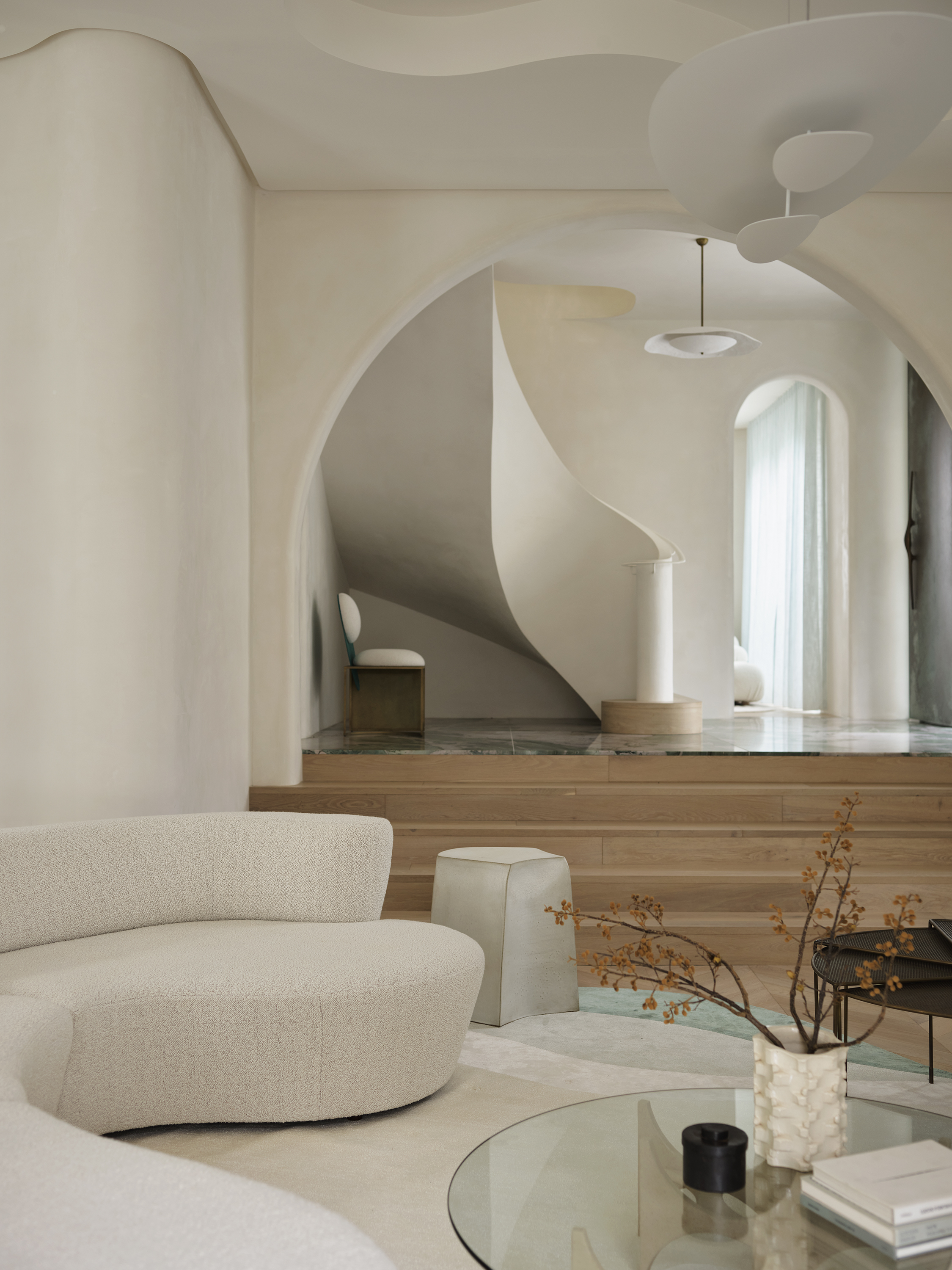
While positive space refers to areas which are occupied within a room, negative space in interior design is that which exists around the furniture, artwork, décor, and so on. And both should be considered for a successful design.
The notion to keep in mind is that positive and negative space are always in dialogue — negative space gives the eye pause between objects, as a cluttered room would be visually overwhelming, but it also allows positive space to be appreciated, so that what is selected for a room makes the impact it should.
How to use positive space in interior design
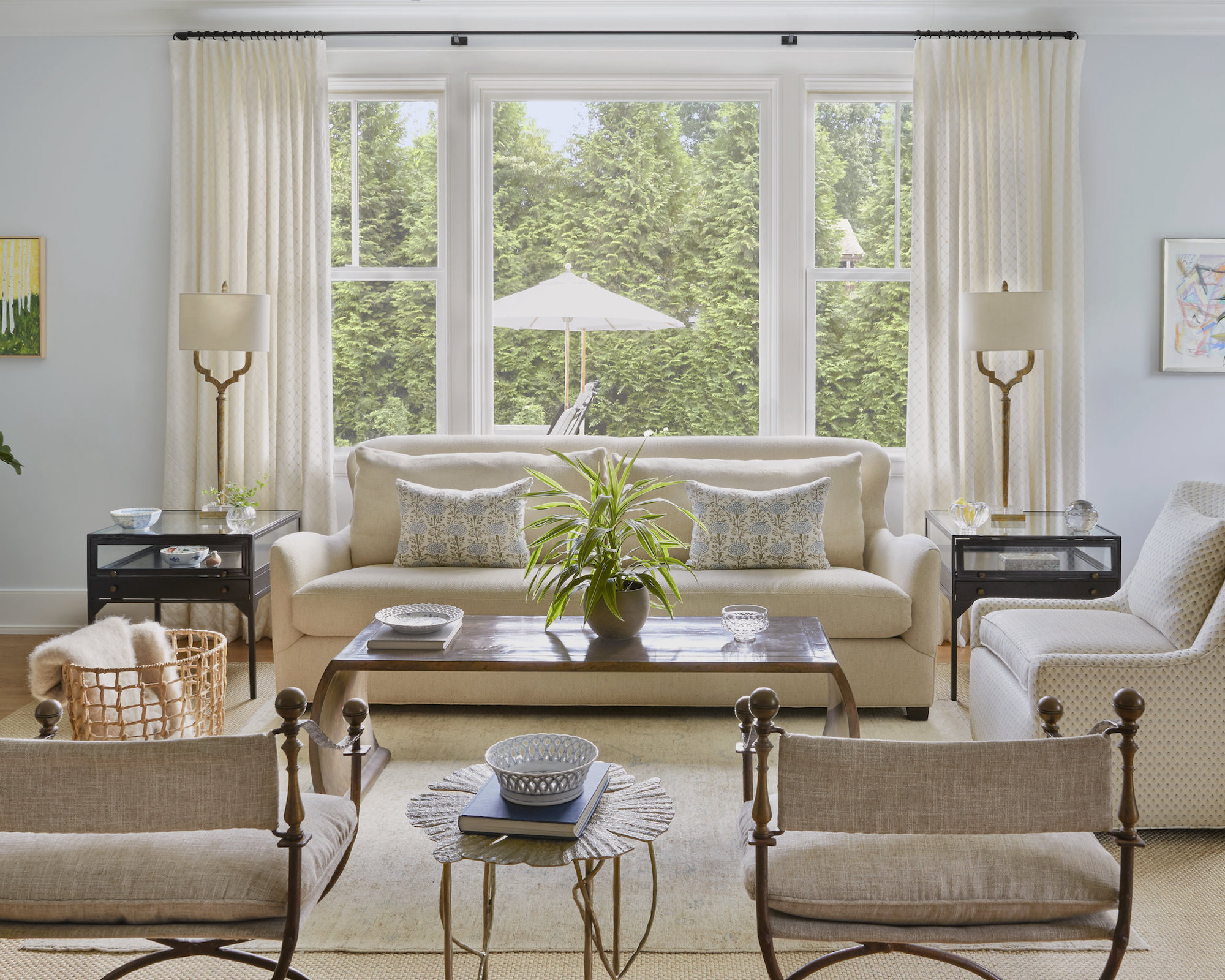
The use of positive space should serve the functions of the interior. In the home shown above, New York City-based interior designer Julie Anne Burch designed the space for comfort and for entertaining.
“We thoughtfully maximized positive space in every room to ensure functionality without compromising comfort,” she says. “The couple wanted ample seating for entertaining, but it was equally important to maintain a sense of spaciousness.”
The use of positive space here also allows her to curate a sense of indoor-outdoor living. “The sofa frames the lush greenery outside,” Julie Anne explains.
Think, too, of how you can use positive space in interior design to create more intimate areas in a home that invite relaxation, as Julie Anne did here. “Throughout the property, seating arrangements cater to every need — spaces where 10 can gather comfortably, intimate corners for two, and serene spots for one to enjoy a book, a phone call, or quiet reflection,” she explains.
Now that you have a better understanding of positive space in interior design, and how it relates to negative space, it's also worth getting your head around other important design principles, like rhythm in interior design.
Be The First To Know
The Livingetc newsletters are your inside source for what’s shaping interiors now - and what’s next. Discover trend forecasts, smart style ideas, and curated shopping inspiration that brings design to life. Subscribe today and stay ahead of the curve.

Sarah is a freelance journalist and editor. Previously Executive Editor of Ideal Home, she’s specialized in interiors, property and gardens for over 25 years. She’s written for websites including Houzz, Channel 4’s flagship website, 4Homes, and Future’s T3; national newspapers including The Guardian; and brands including Future’s Homes & Gardens, Country Homes & Interiors, Homebuilding & Renovating, and Period Living, as well as House Beautiful, Good Homes, Grand Designs, Homes & Antiques, and The English Home among others. It’s no big surprise that she likes to put what she writes about into practice, and is a serial house renovator.
-
 The 'New British' Style? This Victorian London Home Embraces Its Owners' Global Background
The 'New British' Style? This Victorian London Home Embraces Its Owners' Global BackgroundWarm timber details, confident color pops, and an uninterrupted connection to the garden are the hallmarks of this relaxed yet design-forward family home
By Emma J Page
-
 Muji Living Room Ideas — 5 Ways to Harness The Calming Qualities of This Japanese Design Style
Muji Living Room Ideas — 5 Ways to Harness The Calming Qualities of This Japanese Design StyleInspired by Japanese "zen" principles, Muji living rooms are all about cultivating a calming, tranquil space that nourishes the soul
By Lilith Hudson